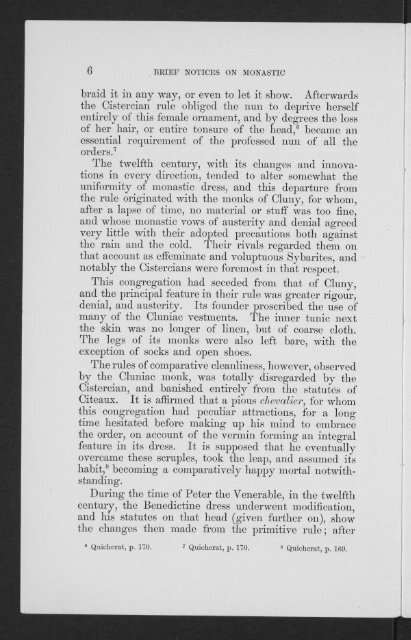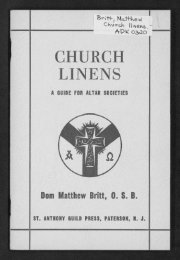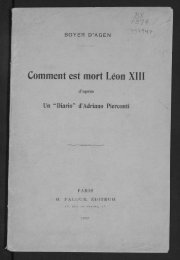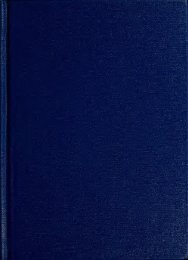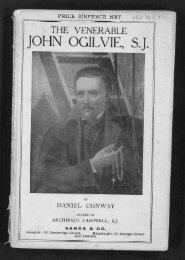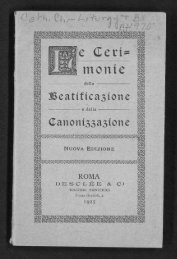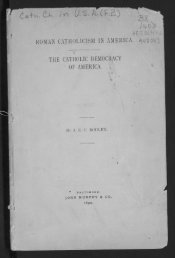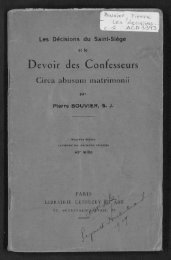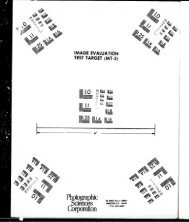MONASTIC AND ECCLESIASTICAL. COSTUME.
MONASTIC AND ECCLESIASTICAL. COSTUME.
MONASTIC AND ECCLESIASTICAL. COSTUME.
Create successful ePaper yourself
Turn your PDF publications into a flip-book with our unique Google optimized e-Paper software.
6 BBIEF NOTICES ON <strong>MONASTIC</strong><br />
braid it in any way, or even to let it show. Afterwards<br />
the Cistercian rule obliged the nun to deprive herself<br />
entirely of this female ornament, and by degrees the loss<br />
of her hair, or entire tonsure of the head, 6 became an<br />
essential requirement of the professed nun of all the<br />
orders. 7<br />
The twelfth century, with its changes and innovations<br />
in every direction, tended to alter somewhat the<br />
uniformity of monastic dress, and this departure from<br />
the rule originated with the monks of Cluny, for whom,<br />
after a lapse of time, no material or stuff was too fine,<br />
and whose monastic vows of austerity and denial agreed<br />
very little with their adopted precautions both against<br />
the rain and the cold. Their rivals regarded them on<br />
that account as effeminate and voluptuous Sybarites, and<br />
notably the Cistercians were foremost in that respect.<br />
This congregation had seceded from that of Cluny,<br />
and the principal feature in their rule was greater rigour,<br />
denial, and austerity. Its founder proscribed the use of<br />
many of the Cluniac vestments. The inner tunic next<br />
the skin was no longer of linen, but of coarse cloth.<br />
The legs of its monks were also left bare, with the<br />
exception of socks and open shoes.<br />
The rules of comparative cleanliness, however, observed<br />
by the Cluniac monk, was totally disregarded by the<br />
Cistercian, and banished entirely from the statutes of<br />
Citeaux. It is affirmed that a pious chevalier, for whom<br />
this congregation had peculiar attractions, for a long<br />
time hesitated before making up his mind to embrace<br />
the order, on account of the vermin forming an integral<br />
feature in its dress. It is supposed that he eventually<br />
overcame these scruples, took the leap, and assumed its<br />
habit, 8 becoming a comparatively happy mortal notwithstanding.<br />
During the time of Peter the Venerable, in the twelfth<br />
century, the Benedictine dress underwent modification,<br />
and his statutes on that head (given further on), show<br />
the changes then made from the primitive rule; after<br />
6 Quicherat, p. 170. » Quicherat, p. 170. 8 Quicherat, p. 169.


